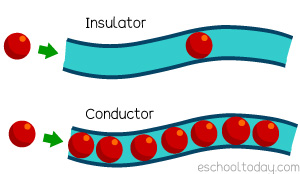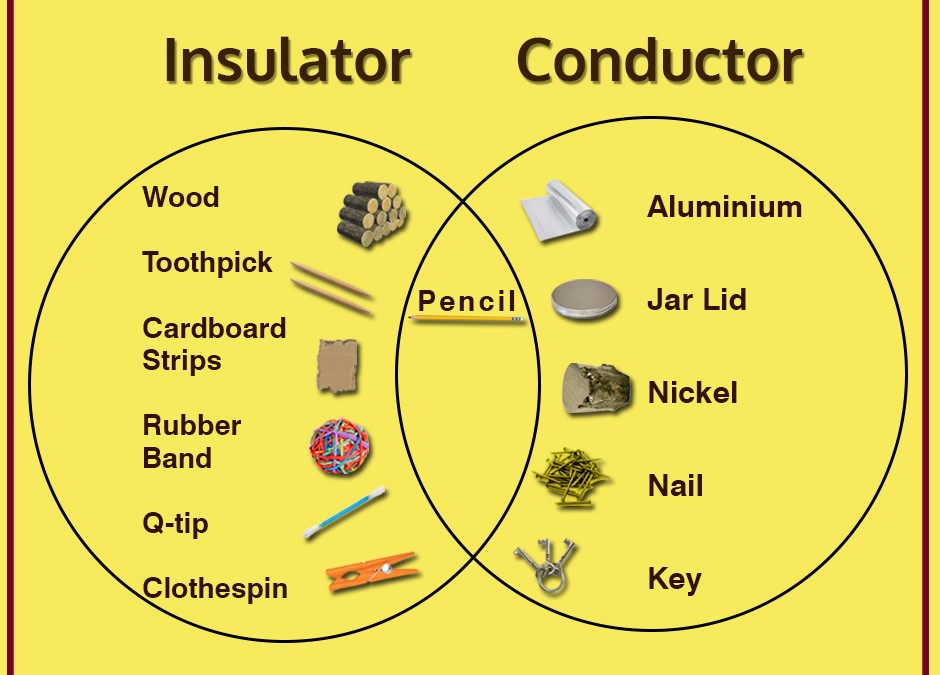A conductor is a material that allows electrons to flow freely through it, making it a good choice for electrical wiring and other applications where electrical current needs to be conducted. An insulator, on the other hand, is a material that does not allow electrons to flow freely and is therefore resistant to the flow of electrical current. These two types of materials play a crucial role in the functioning of many different electrical systems and devices.
Conductors are made up of atoms with loosely bound electrons, which are free to move through the material. This makes it easy for electrical current to flow through a conductor. Examples of common conductors include copper, aluminum, and gold. These materials are often used in electrical wiring, as well as in the production of electronic devices such as computers and smartphones.
Insulators, on the other hand, are made up of atoms with tightly bound electrons that are not easily moved. This makes it difficult for electrical current to flow through an insulator, making it a good choice for applications where electrical current needs to be isolated or controlled. Examples of common insulators include rubber, plastic, and glass. These materials are often used in electrical insulation, as well as in the production of electrical devices such as circuit breakers and switches.
Conductors and insulators are both essential in the functioning of many different electrical systems. For example, electrical wires are typically made of conductors in order to allow electrical current to flow through them, while the insulation surrounding the wires is typically made of an insulator to prevent the electrical current from escaping. Similarly, circuit breakers and switches use insulators to control the flow of electrical current and prevent accidents and damage.
In summary, conductors and insulators are two types of materials that play a crucial role in the functioning of many different electrical systems and devices. Conductors are materials that allow electrons to flow freely through them, making them good for electrical wiring and other applications where electrical current needs to be conducted. Insulators, on the other hand, are materials that do not allow electrons to flow freely and are therefore resistant to the flow of electrical current. These two types of materials are essential in the safe and efficient functioning of many different electrical systems and devices.
Conductor vs Insulator: What's the difference?

What is the difference between conductors and insulators? Also, conductors allow heat to be transmitted through them. User assumes all risk of use, damage, or injury. The materials have such low conductivity that the flow of current is almost negligible, thus they are commonly used to protect us from dangerous effects of electricity. And in some materials, it is almost impossible to get them to move. Heat can be generated.
Difference between Conductors and Insulators

Wood, plastic, rubber, and glass are good insulators. The electric field exists on the surface but remains zero on the inside. Any material that keeps energy such as electricity, heat, or cold from easily transferring through is an insulator. Materials which allow electric current to pass through them are called conductors of electricity. This is because the pan is made up of metal that can conduct the heat energy due to molecular movement from one point to another. The heat is caused by the resistance of the material to the flow of electrons and by friction between the electrons moving through it. Synonyms Its synonyms are insulant- for substances, and isolation- for the process.
Conductor or Insulator

There are other differences between the two in reference to their origin, synonyms, antonyms, and other related terms. The insulators have more than 4 electrons in their outermost shell. Non-Conductors indicate the energy storing capacity of the material. Examples of insulators are rubber, wood, paper, ceramic, mica, glass, porcelain, etc. The conductivity of the material is directly proportional to the number of free electrons. Insulator vs Non-Conductor The main difference between Insulator and Non-Conductor is that an insulator is any substance that prohibits the transmission of heat, sound, or electricity.
What is conductor and insulator with example?

The properties of conductors and insulators can be understood by examining the behavior of the electrons in the material. It stops you from getting an electrical shock. This can be seen in rubber-coated wires and cables. Some examples of Non-Conductors are porcelain or ceramic, glass, mica, plastics, and the oxides of different metals. On the other hand, any object or material that cannot transfer heat between two points is considered an insulator. Insulators of heat: plastic, rubber. A few examples of heat conduction Before wrapping up, let us give two examples each of conductors and insulators of heat to become clear.







